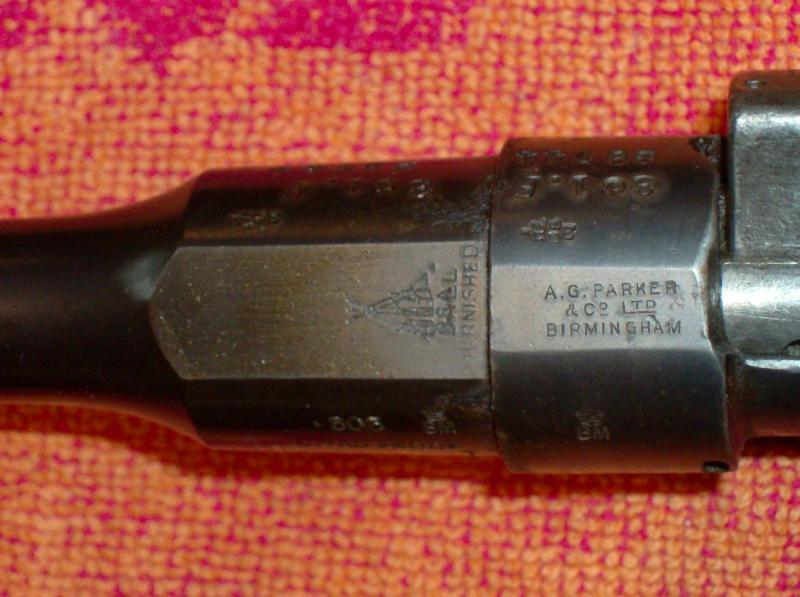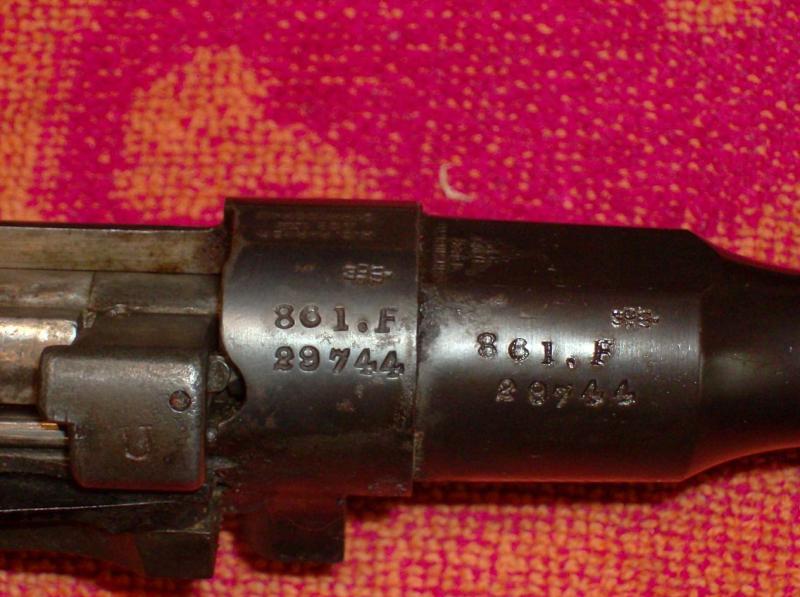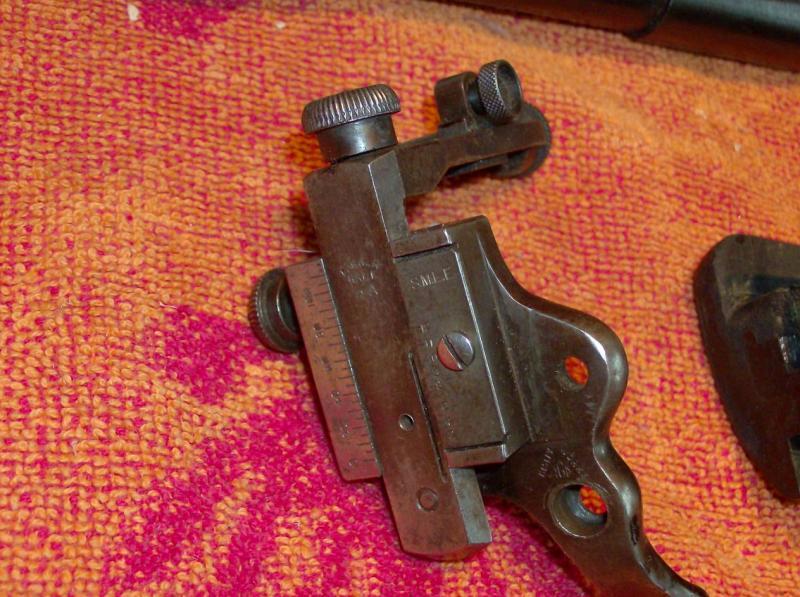-
Questions about an AG Parker SMLE :)
-
-
11-06-2014 10:52 AM
# ADS
Friends and Sponsors

-
Advisory Panel


what plate and screw on the left side?
are you referring to the safety spring?
does your rifle have a conventional rear sight?
-
-
-
Lou,
Its a commercial rifle, the AG Parker stamp IIRC means it was regulated by them... The wood would never have been varnished
-
-
Advisory Panel


Quite a few SMLE target rifles did have a french Polish finish - it looks like varnish. Its not a military finish of course, but its quite common on rifles retailed by the likes of AJ Parker, Parker Hale, Stensby, Fulton, etc.
Looks like it should be quite a nice rifle; it has a ball burnished barrel fitted.
-
Thank You to Thunderbox For This Useful Post:
-
Legacy Member

It is a bog-standard BSA SMLE that has been 'improved' by AG Parker
The sight is actually a PH5A (not a 3A) and as you sugest it is missing its scale plate and screws.
Mine are not the best, but they are not too bad. I can think of lots of Enfields I'd rather have but instead of constantly striving for more, sometimes it's good to be satisfied with what one has...
-
-
THanks for the comments, guys.

Originally Posted by
Lee Enfield

what plate and screw on the left side?
are you referring to the safety spring?
does your rifle have a conventional rear sight?
I think there should be a thin sheet metal plate on the side, to coincide with the elevation markings; to zero it exactly. Not entirely sure but I think that's what's going on that slot and screw hole visible in the picture.
A conventional rear sight is on that rifle and number-matched. I should add that the Parker Hale target sight came from a different rifle.
---------- Post added at 04:36 PM ---------- Previous post was at 04:34 PM ----------
Dang, Alan beat me to it! Thanks Allan. Anyone has any idea how I can hunt down a suitable scale plate and screw? I know this is unlikely to exist, except on another complete sight assembly! 
-
-
Speak nicely to Colin or Robert at Fultons of Bisley. They have a small box of spare parts. Not cheap but cheaper than they'll be tomorrow I suspect. And MUCH cheaper than when they've run out!
-
Thank You to Peter Laidler For This Useful Post:
-
Legacy Member

The ball-burnishing and the government viewer's mark show it is a civilian-sales rifle. The swivel was frequently removed by users who had no need for it.
Of ball-burnishing, the firm commented:
“ This is a barrel finishing process which we acquired in the year 1922, through the good offices of the late Mr. T. B. Simpson, a Bisley visitor from Australia , where he represented a well-known British
, where he represented a well-known British firm of pump manufacturers. Mr. Simpson brought over sectioned barrels, one of which had been burnished by passing through sized steel balls under pressure. The difference between the unprocessed barrel and the other was remarkable, especially at a time when riflemen were troubled by the presence of hard metallic fouling which in some instances seriously affected the accuracy of their barrels
firm of pump manufacturers. Mr. Simpson brought over sectioned barrels, one of which had been burnished by passing through sized steel balls under pressure. The difference between the unprocessed barrel and the other was remarkable, especially at a time when riflemen were troubled by the presence of hard metallic fouling which in some instances seriously affected the accuracy of their barrels
“ The sectioned barrels showed that the ball burnished barrel had a dark mirror-like perfectly smooth surface on the lands, whereas the other barrel, although well rifled, had innumerable cross-cuts on the lands which under the great pressure which the bullets exerts on the bore, scrapes off some of the metal jacket of the bullets until an excessively hard lump of metal forms which cuts into the passing bullets and destroys accuracy.
“ Ball Burnishing closes up these cuts on the lands and although it does not touch the grooves it is rarely that any metallic fouling collects there as these grooves are cut longitudinally, i.e. in the same direction as the passage of the bullet, therefore, there are no cross cuts to scrape the bullet skin and, therefore, no hard fouling of any consequence.
“ In a barrel that is worn, the edges of the lands become rounded, thus reducing the area of contact available to the ball in the burnishing process; it follows, therefore, that Ball Burnishing is most effective when applied to unworn barrels. For this reason it is to be recommended chiefly for application to new barrels, thereby improving their initial levelness and the homogeneity of the wearing surface of the lands giving an expectation of greater accuracy, longer life and less likelihood of collecting metallic fouling………
“ Ball Burnishing enlarges the average bore by approximately one half thousandth part of an inch, an almost infinitesimal amount which in no circumstances can cause any detrimental effect.
Many marksmen using Service rifles are misled into error in specifying precise bore sizes when placing orders for new barrels or new rifles. It is impracticable within the tolerances maintained under present day conditions [1961] to furnish barrels with bore sizes which were current before the second World War.
“ New barrels today are officially acceptable when made between .301 and .304 gauge, but 98% of new barrel production is found to gauge between .301 and .3025……….”
-
The Following 2 Members Say Thank You to Mk VII For This Useful Post:
-
Thanks again folks.
Peter, again you never cease to amaze me. What a resourcefull fellow you are. Wish I could just stop by for a visit at Fultons  I'll PM you soon.
I'll PM you soon.
Lou
-
-
Legacy Member

louthepou, if you have no joy from Fulton's, PM me, I believe I have a scale plate and the 2 x screws for your PH5A sight somewhere, haven't seen it for while but can have dig through my parts trays if need be
-
Thank You to brnom2 For This Useful Post:
or leave as is?
If you know anyone who has these parts lying around...





















 PM
PM










 I'll PM you soon.
I'll PM you soon. 
